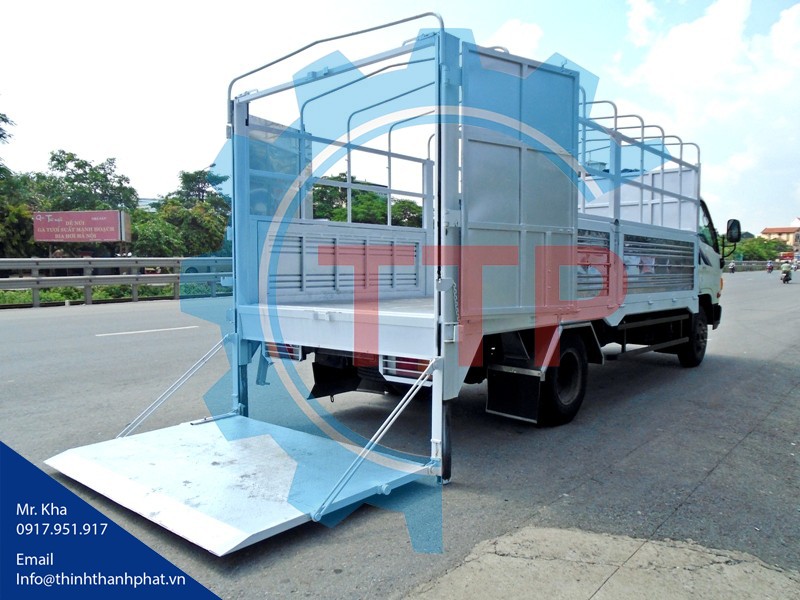Truck tail lifts, also known as liftgates, are invaluable devices that aid in the transportation and unloading of goods. Attached to the rear of a truck, a tail lift acts as a mobile platform, making loading and unloading cargo easier and safer. These devices are becoming increasingly popular due to their ability to optimize work efficiency, reduce physical labor, and ensure cargo safety.
 Truck tail lift
Truck tail lift
What is a Truck Tail Lift and Why is it Important?
A truck tail lift is a hydraulic-mechanical system designed to raise and lower goods from the ground to the truck bed and vice versa. The main component of a tail lift is a platform connected to a hydraulic system and control mechanism. This device is especially important in modern logistics operations, where time and efficiency are crucial. Using a tail lift not only speeds up the loading and unloading process but also minimizes the risk of cargo damage due to impacts during manual handling.
 Truck equipped with a tail lift
Truck equipped with a tail lift
Common Types of Truck Tail Lifts Available Today
To meet the diverse needs of users, truck tail lifts are classified according to various criteria, mainly based on the lifting mechanism, height, and folding style. Here are some common classifications:
1. Classification by Lifting Mechanism and Drive:
- Hydraulic Tail Lifts: This is the most common type, using a hydraulic system to raise and lower the platform. The advantage of this type is its powerful and stable operation, capable of lifting heavy loads.
- Cable Tail Lifts: Uses cables combined with a hydraulic or mechanical system for lifting and lowering. This type is often used for trucks with smaller payloads.
- Hydraulic-Cable Combination Tail Lifts: Combines the advantages of both types, providing flexibility and efficiency in various situations.
2. Classification by Lifting Height:
- Single-Level Tail Lifts: The standard type, with a single-level platform suitable for most common types of cargo.
- Double-Level Tail Lifts: A special design with two lifting levels, often used for livestock trucks or special cargo that requires layering during transport.
3. Classification by Tail Lift Folding Style:
- Front Folding: The tail lift is folded under the truck bed before the rear doors are closed.
- Rear Folding: The rear doors of the truck are closed first, and then the tail lift is folded up to the rear.
Choosing the right type of tail lift depends on many factors such as the type of truck, cargo load, intended use, and work space.
 Tail lift for loading and unloading goods
Tail lift for loading and unloading goods
Outstanding Benefits of Using Truck Tail Lifts
Using a truck tail lift provides many practical benefits for businesses and users:
- Saves Time and Effort: The process of loading and unloading goods becomes faster and easier, reducing waiting times and manual labor.
- Increases Productivity: Work efficiency increases significantly, helping businesses transport more goods in the same amount of time.
- Ensures Safety: Minimizes the risk of workplace accidents and cargo damage during handling, especially with heavy or bulky goods.
- Saves Costs: Reduces labor costs, insurance costs, and repair costs due to cargo damage.
- Professionalism: Demonstrates professionalism and modernity in transport operations, enhancing the company image.
With these outstanding advantages, truck tail lifts are becoming an indispensable piece of equipment for transport businesses and individuals who need to transport goods regularly. To learn more about the types of truck tail lifts and choose the right product, contact Xe Tải Mỹ Đình for the best advice and support.

